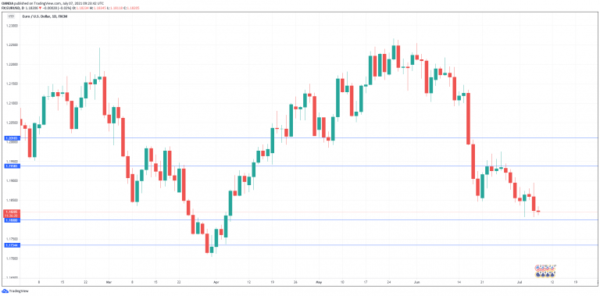Wednesday has been a quiet day for the euro. In European trade, EUR/USD is trading at 1.1828, down 0.04% on the day.
German industrial production declines
The German economy continues to show weakness in production data. Industrial Production for May MoM came in at -0.3%, identical to the April reading. This missed the consensus of 0.5%. Granted, on an annualized basis the data looks better, with a 17.3% gain compared to May 2020. However, a year ago, much of the industrial sector was shut down due to Corona, such the large gain is a deviation. Analysts are more interested in a comparison with pre-Covid levels (early 2020) and currently, industrial production is some 5% lower than prior to Covid.
The weak reading comes on the heels of Factory Orders for May, which declined -3.7%, down from 1.2% in April, and well below the consensus of 1.0%. The weak reading is attributable to shortages in supply chains, which have become acute as demand far outstrips capacity.
This problem of demand exceeding supply is not limited to Germany; it is a global problem as economies reopen and businesses and consumers are in a spending mode, looking for things to buy. The unleashing of pent-up demand following months of strict lockdowns is causing inflationary pressures much to the consternation of the major central banks. In the US, the surge of inflation raised expectations of interest rates and the Federal Reserve to make a U-turn and surprised the markets by announcing that it now expects to raise rates twice in 2023. This, after months of reassuring the markets that inflation was transient and that there were no plans to raise rates before 2024.
Investors will be keeping a close eye on the FOMC minutes, which will be released later today (18:00 GMT).
EUR/USD Technical
- EUR/USD has support at 1.1800, which has held since April. Below, there is support at 1.1734
- There is resistance at 1.1938 and 1.2010














